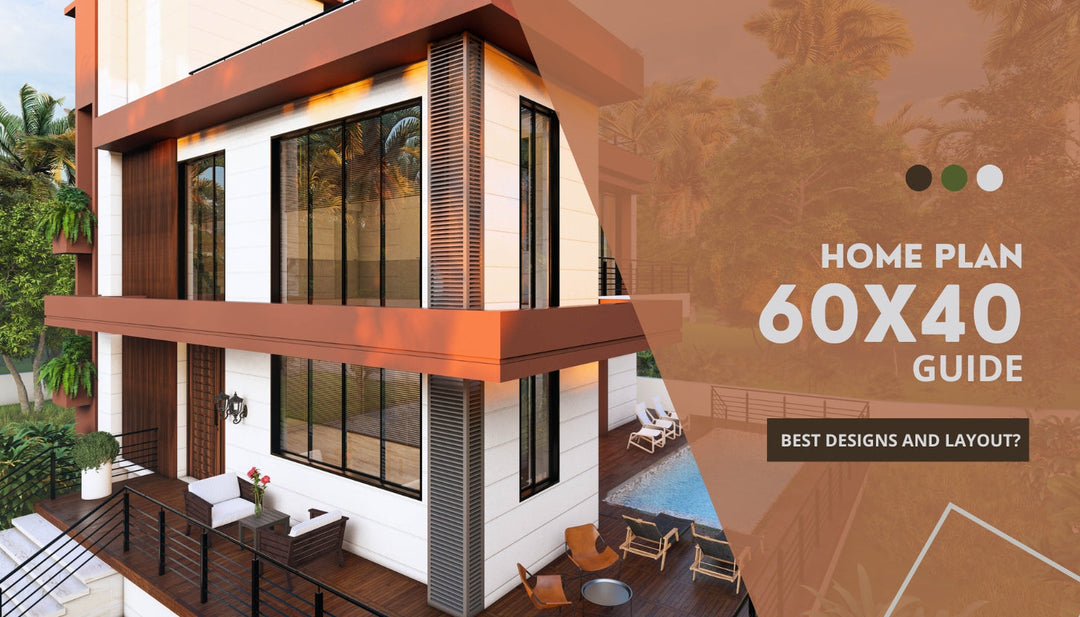Rooftop Garden Guide: Mastering Design
 Imagine transforming your urban rooftop in Maharashtra into a lush, thriving garden—an oasis amidst the concrete jungle. As an architect, you have the power to create this reality, and science is your guide. This comprehensive guide delves into the technical and scientific considerations behind successful rooftop garden design in Maharashtra. We'll explore key elements, address challenges, and provide practical tips to help you create stunning and sustainable green spaces atop Maharashtra's urban homes.
Imagine transforming your urban rooftop in Maharashtra into a lush, thriving garden—an oasis amidst the concrete jungle. As an architect, you have the power to create this reality, and science is your guide. This comprehensive guide delves into the technical and scientific considerations behind successful rooftop garden design in Maharashtra. We'll explore key elements, address challenges, and provide practical tips to help you create stunning and sustainable green spaces atop Maharashtra's urban homes.
Understanding the Science of Rooftop Gardens in Maharashtra
Creating rooftop gardens in Maharashtra requires an understanding of the region's climate, structural engineering principles, materials science, horticulture and more. We break down key scientific factors to consider:
Climate Considerations: Rainfall Patterns, Heat, Wind, and Humidity
Maharashtra has a tropical monsoon climate, experiencing distinct wet and dry seasons. Rainfall patterns vary across different areas. Architects must account for heavy monsoon showers and dry months when planning rooftop drainage, irrigation, and plant choices. Heat, humidity and wind flow also impact design decisions.
Structural Integrity Assessment
Assessing if the existing rooftop structure can bear the load of a garden is crucial. Soil, water and vegetation add immense weight. Structural engineers must evaluate if reinforcement like additional columns or beams are needed to support concentrated loads. Waterproofing is also essential.
Waterproofing and Drainage Systems
Maharashtra's heavy monsoons means roofs must have adequate waterproofing and drainage to avoid leakage, flooding and structural damage. Common solutions include PVC membranes, geotextiles, gravel trenches, and rainwater harvesting systems. Learn more about Water Elements in Landscape Design.
Soil and Substrate Selection for Maharashtra's Conditions
The soil mix directly impacts plant health and drainage. Locally available lightweight soils, compost, gravel and leca may be used. The ratio of these ingredients can be tailored to provide nutrients, adjust pH, improve drainage, and reduce weight as needed.
Plant Choice for Maharashtra's Climate and Microclimate
Choosing native, drought/flood-resistant plants suited to Maharashtra's tropical climate ensures they thrive. Understanding the rooftop's solar exposure, wind flow and other microclimate factors also guides appropriate species selection.
Irrigation Systems and Water Management Strategies
Drip irrigation, sprinklers, or rainwater harvesting systems may be installed per site needs. Mulching and moisture-retentive substrates also limit water usage. Zoning vegetation by water needs improves efficiency. Backup water sources are critical for Maharashtra's hot summers.
Weight-Bearing Capacity and Plant Placement
Placement of heavier elements like trees, water features or soil beds must align with the assessed load-bearing capacity. Structural readiness often decreases towards the roof edge. Lighter plants are thus used in weaker zones to distribute weight appropriately.
Design Essentials for Architects: Creating Functional & Aesthetic Rooftop Gardens
With science fundamentals providing the foundation, architects can leverage design to craft functional, beautiful rooftop gardens in Maharashtra's urban areas:
Space Planning and Zoning for Multiple Uses
Well-planned zones cater to different needs - entertaining spaces, kitchen gardens, relaxation nooks etc. Traffic flow, safety barriers, storage areas and vertical greenery must also be accounted for when space planning.
Wind Mitigation Strategies for Maharashtra's Climate
Structural and living buffers are used to reduce strong wind impacts that may uproot plants. Solutions include trellises, nets, green walls, careful orientation and planting locations. Airflow modeling informs layouts.
Incorporating Green Building Principles and Sustainability
Rooftop gardens align well with green architecture tenets. Locally-sourced, recycled materials cut carbon footprint. Solar panels or wind turbines can also be installed. Rainwater harvesting reduces water usage while supporting biodiversity.
Aesthetic Considerations: Design Styles for Maharashtra Homes
Garden themes range from contemporary to cottagecore. Finishes, hardscaping, accent pieces etc. must cohesively match the main home's aesthetic. Cultural elements also inspire regional garden styles befitting Maharashtra's homes.
Selecting Materials for Durability and Visual Appeal
Saline and humid conditions demand durable fittings like stainless steel, aluminum frames, composite wood, or reinforced concrete. Using quality materials minimizes maintenance issues while boosting visual cohesion.
Maintenance Tips for Thriving Rooftop Gardens in Maharashtra
Sustaining lush and healthy rooftop gardens in challenging urban settings requires diligent care. We outline key upkeep practices:
Regular Inspection and Upkeep
Frequent checks after extreme weather plus scheduled seasonal maintenance keeps issues in check before they escalate eg. clearing drain obstructions after heavy rain. Annual overhaul of failing components is also needed.
Watering Schedules and Adjustments for Seasonal Variations
Meticulous irrigation aligned with Maharashtra's dry/wet cycles optimizes water usage and prevents disease. Rainwater harvesting reduces dependency on municipal sources. Soil moisture sensors also assist.
Fertilization and Pest Control Strategies
Applying organic fertilizers like compost maintains soil health. Neem oil, insecticidal soap etc can control pests. Seeking horticultural guidance for Maharashtra's native species is recommended.
Pruning and Plant Care for Optimal Growth
Strategic pruning encourages healthy, aesthetic plant growth while controlling size/spread. Other care like staking, cleaning leaves etc. also prevents issues. Understanding species-specific needs is key.
Addressing Common Challenges in Maharashtra's Climate
Extreme rain or drought in Maharashtra can be handled by adjusting irrigation, using protective coverings/structures, improving drainage capacity and soil composition. Backup water sources help combat droughts if rains fail.
In summary, with some design finesse guided by science, Maharashtra's urban rooftops can be transformed into bountiful gardens - combating concrete jungle aesthetics while bringing health, recreational and sustainability benefits. We encourage architects to embrace rooftop farming and refer amazing case studies for inspiration!
Additional Tips:
- Use drought-resistant native plants like cacti and succulents
- Install solar panels to power water pumps and lighting
- Create seating areas and relaxation nooks amidst garden beds
- Opt for lightweight garden substrates to reduce structural load
- Have an expert assess load-bearing capacity before designing
- Talk to local horticulturists for plant recommendations
- Use this guide as a starting point for your unique garden vision!
We hope this comprehensive rooftop garden blueprint equipped you to confidently design thriving green sanctuaries atop Maharashtra's urban homes. Please share any queries in the comments section. And do send us photos when your gardens bloom!








Can you exclusively cover the concept of drainage and waterproofing of the plant beds. What materials to be used
Leave a comment